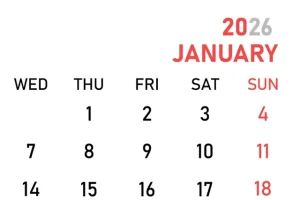SCOTUS McLaughlin Ruling Cracks Open FCC TCPA Interpretations
The U.S. Supreme Court has rendered a much-anticipated decision this month that is sure to have huge implications for telemarketing compliance and enforcement across the country.
In McLaughlin Chiropractic v. McKesson, the Court ruled that federal district courts (i.e., trial-level courts) are not bound to follow the Federal Communications Commission’s (FCC’s) interpretations of the Telephone Consumer Protection Act (TCPA) in private lawsuits. For years, courts adhered to the “Hobbs Act,” a federal statute that was interpreted to mean that only circuit (appellate) courts could review FCC orders or interpretations, and only if the challenge was filed within 60 days of issuance.
With the McLaughlin ruling, the Court has made it clear that trial-level courts—there are 94 of them across the U.S.—may still afford appropriate respect to FCC interpretations, but they are not required to follow them. Instead, courts must “independently determine the law’s meaning under ordinary principles of statutory interpretation.” This is a seismic shift in how courts may interpret, apply, and enforce telemarketing law going forward.
McLaughlin Case Background
This case stems from a 2013 class action lawsuit brought by McLaughlin Chiropractic Associates against McKesson Corporation and others, alleging violations of the TCPA for sending unsolicited promotional faxes. Some of those faxes were received through traditional fax machines, while others were received via online/email-based fax systems.
While the case was pending, the FCC issued a 2019 ruling—the “Amerifactors Order”—which concluded that online fax services do not qualify as “telephone facsimile machines” under the TCPA. Based on the longstanding Hobbs Act precedent, the district court in McLaughlin, treated the FCC’s order as controlling and, therefore, decertified the class, reasoning that it couldn’t reliably distinguish which class members had received traditional faxes versus those who had received faxes via online platforms.
The case made its way to the U.S. Supreme Court which has now ruled that while the FCC’s interpretation may still carry weight, district courts are not required to treat such interpretations as binding in private litigation. This upends years of lower court precedent built on the assumption that the FCC’s views must be followed unless challenged on a tight timeline in a federal court of appeals.
What are Real-world Implications and What Kinds of Rules are Now Vulnerable?
In a nutshell, the McLaughlin ruling means FCC interpretations are no longer automatically binding. Trial-level courts are no longer locked into an FCC interpretation just because it was never challenged under the Hobbs Act. District courts can now decide what the TCPA says—even if the FCC already issued an interpretation and no one challenged it under the Hobbs Act. Courts now get to weigh those interpretations—but they can—and will likely—disagree.
While the Supreme Court’s ruling in McLaughlin dealt with an FCC declaratory ruling, the Court’s reasoning strongly suggests that a range of FCC guidance—both interpretive and rule-based—may now be subject to legal challenge in district courts.
Declaratory Rulings and Interpretive Orders
These are FCC actions that interpret the TCPA but are not issued through formal rulemaking. For years, these rulings have been considered as binding on lower courts and could only be challenged in Circuit Courts of Appeal within 60 days of publication (pursuant to the Hobbs Act).
Under McLaughlin, however, district courts are now free to depart from these interpretations, and we expect many will, especially when the FCC’s interpretation stretches beyond the text of the TCPA.
Potential Targets:
- “Marketing” vs. “Informational” Messages: The TCPA does not define “marketing.” The FCC created that distinction—and courts may now reconsider how much weight to give that construct.
- Prior Express Written Consent: The TCPA speaks of “prior express consent,” but the “written” requirement is a product of an FCC’s interpretive expansion in 2012. Some may argue that layering in a “written” condition—particularly for calls or texts to wireless numbers—goes beyond the statute.
- “Text Messages” as “Calls”: Nowhere does the TCPA mention texts, but the FCC has long interpreted SMS and MMS as covered “calls.” District courts may now reconsider that view in light of evolving technology and plain language arguments.
- Quiet Hour Texting Petitions (Pending): A pending petition before the FCC asks whether consent to receive texts generally also covers texts sent during TCPA “quiet hours” (before 8 a.m. or after 9 p.m. local time). Under McLaughlin, even if the FCC issues a new interpretation, district courts could reject it if they believe it conflicts with the statute, or they are free to interpret the law without an FCC ruling.
Formal FCC Rules (Promulgated via Rulemaking)
These rules are typically more difficult to challenge in court, but we saw success earlier this year when the Eleventh Circuit vacated the FCC’s 1:1 consent rule for robocalls and robotexts – a rule issued in late 2023 and finalized in early 2024. That decision came through a traditional Hobbs Act petition within the 60-day window, but it shows that even fully promulgated rules will probably not be immune from scrutiny.
McLaughlin included a notable footnote that signals some may now be vulnerable under the Administrative Procedure Act (APA). This means parties in litigation could argue, similar to the 1:1 consent case, that certain past FCC rules:
- Exceed the FCC’s statutory authority under the TCPA,
- Are arbitrary or capricious, or
- Conflict with the plain language of the statute.
Now, under McLaughlin, if a business is sued in district court and it disagrees with a prior FCC rule, they will be able to challenge it directly—even if there was no Hobbs Act petition at the time it was issued.
Next Steps
We will have to see how this plays out, but it would not be surprising to begin seeing some challenges to FCC interpretations in district courts that have previously been considered particularly onerous. While this may be viewed as an exciting development for business, it also introduces an element of uncertainty, as districts can—and will—disagree on interpretations and businesses might be subject to different rules in different jurisdictions until issues bubble up to appellate courts or even the U.S. Supreme Court. Heretofore, although businesses may not have liked what the rules were, they at least knew what they were and could apply them consistently in all jurisdictions.
An important thing to remember, too, is that FCC interpretations still carry weight. They are no longer “binding,” but they’re still “persuasive.” And courts will often continue to follow them—unless you bring a clear, well-argued legal challenge. This decision is certainly not a license to disregard prior FCC rulings, but rather a reminder that any changes must come through the proper legal process.
CompliancePoint has a team of experts that can help your business comply with all marketing regulations, including the TCPA, TSR, Do Not Call lists, and all state telemarketing laws. We can also keep your organization up to date as regulations evolve. Contact us at connect@compliancepoint.com to learn more about our services.
Finding a credible expert with the appropriate background, expertise, and credentials can be difficult. CompliancePoint is here to help.





